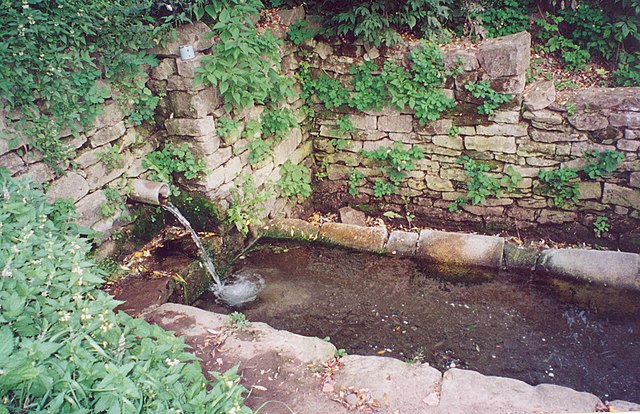The Floridan aquifer system, composed of the Upper and Lower Floridan aquifers, is a sequence of Paleogene carbonate rock which spans an area of about 100,000 square miles (260,000 km2) in the southeastern United States. It underlies the entire state of Florida and parts of Alabama, Georgia, Mississippi, and South Carolina.
Water under artesian pressure soars from a well tapping the Floridan aquifer system in southern Georgia.
Image of the entire surface water flow of the Alapaha River near Jennings, Florida going into a sinkhole leading to the Upper Floridan aquifer.
Groundwater is the water present beneath Earth's surface in rock and soil pore spaces and in the fractures of rock formations. About 30 percent of all readily available freshwater in the world is groundwater. A unit of rock or an unconsolidated deposit is called an aquifer when it can yield a usable quantity of water. The depth at which soil pore spaces or fractures and voids in rock become completely saturated with water is called the water table. Groundwater is recharged from the surface; it may discharge from the surface naturally at springs and seeps, and can form oases or wetlands. Groundwater is also often withdrawn for agricultural, municipal, and industrial use by constructing and operating extraction wells. The study of the distribution and movement of groundwater is hydrogeology, also called groundwater hydrology.
Dzherelo, a common source of drinking water in a Ukrainian village
The entire surface water flow of the Alapaha River near Jennings, Florida, going into a sinkhole leading to the Floridan Aquifer groundwater
Groundwater may be extracted through a water well
Center-pivot irrigated fields in Kansas covering hundreds of square miles watered by the Ogallala Aquifer





